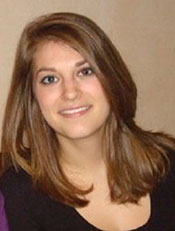Program Information
Monte Carlo Simulation of Cobalt-60 Teletherapy Unit Modeling In-Field and Out-Of-Field Doses for Applications in Computational Radiation Dosimetry
H Petroccia1*, Z Li2, N Mendenhall2, W Bolch1, (1) J. Crayton Pruitt Family of Biomedical Engineering, University of Florida, Gainesville, FL, (2) Radiation Oncology, UF Health Proton Therapy Institute, Jacksonville, FL
Presentations
SU-E-T-559 (Sunday, July 12, 2015) 3:00 PM - 6:00 PM Room: Exhibit Hall
Purpose: Mean organ doses from structures located in field and outside of field boundaries during radiotherapy treatment must be considered when looking at secondary effects. Treatment planning in patients with 40 years of follow-up does not include 3-D treatment planning images and did not estimate dose to structures out of the direct field. Therefore, it is of interest to correlate actual clinical events with doses received.
Methods: Accurate models of radiotherapy machines combined with whole body computational phantoms using Monte Carlo methods allow for dose reconstructions intended for studies on late radiation effects. The Theratron-780 radiotherapy unit and anatomically realistic hybrid computational phantoms are modeled in the Monte Carlo radiation transport code MCNPX. The major components of the machine including the source capsule, lead in the unit-head, collimators (fixed/adjustable), and trimmer bars are simulated. The MCNPX transport code is used to compare calculated values in a water phantom with published data from BJR suppl. 25 for in-field doses and experimental data from AAPM Task Group No. 36 for out-of-field doses. Next, the validated cobalt-60 teletherapy model is combined with the UF/NCI Family of Reference Hybrid Computational Phantoms as a methodology for estimating organ doses.
Results: The model of Theratron-780 has shown to be agree with percentage depth dose data within approximately 1% and for out of field doses the machine is shown to agree within 8.8%. Organ doses are reported for reference hybrid phantoms.
Conclusion: Combining the UF/NCI Family of Reference Hybrid Computational Phantoms along with a validated model of the Theratron-780 allows for organ dose estimates of both in-field and out-of-field organs. By changing field size, position, and adding patient-specific blocking more complicated treatment set-ups can be recreated for patients treated historically, particularly those who lack both 2D/3D image sets.
Contact Email:


